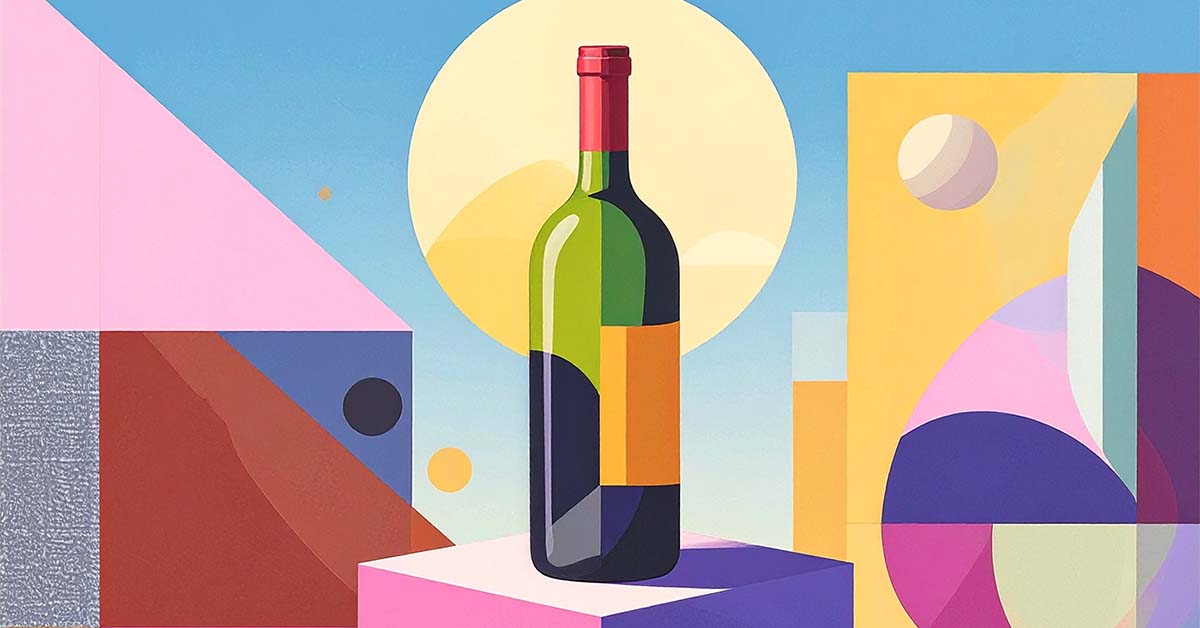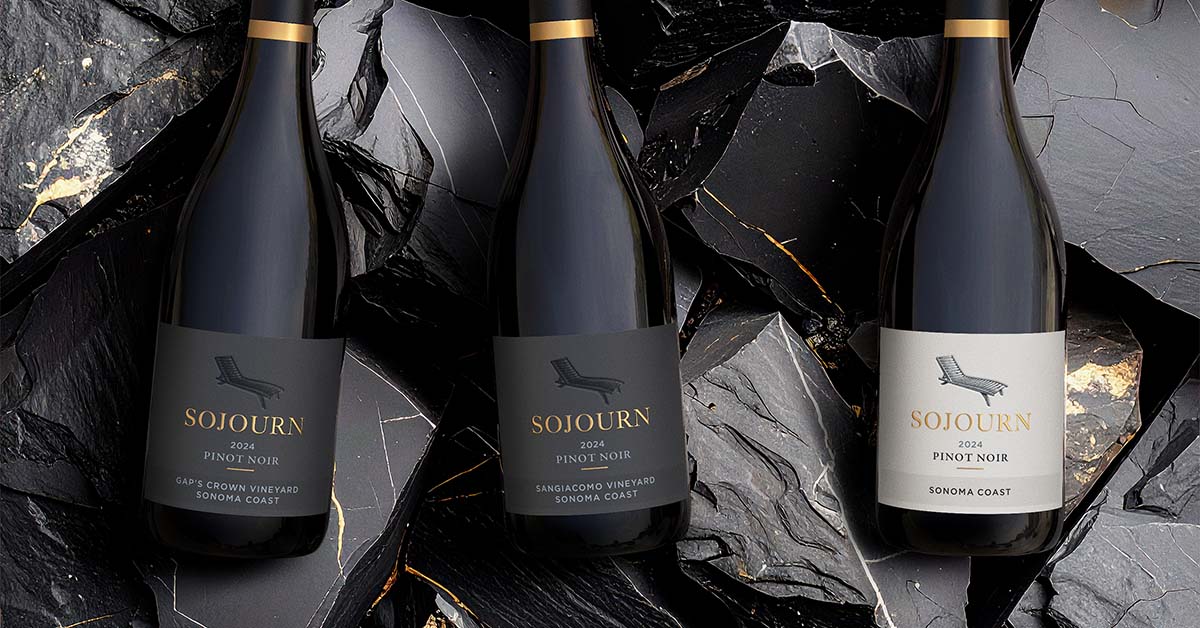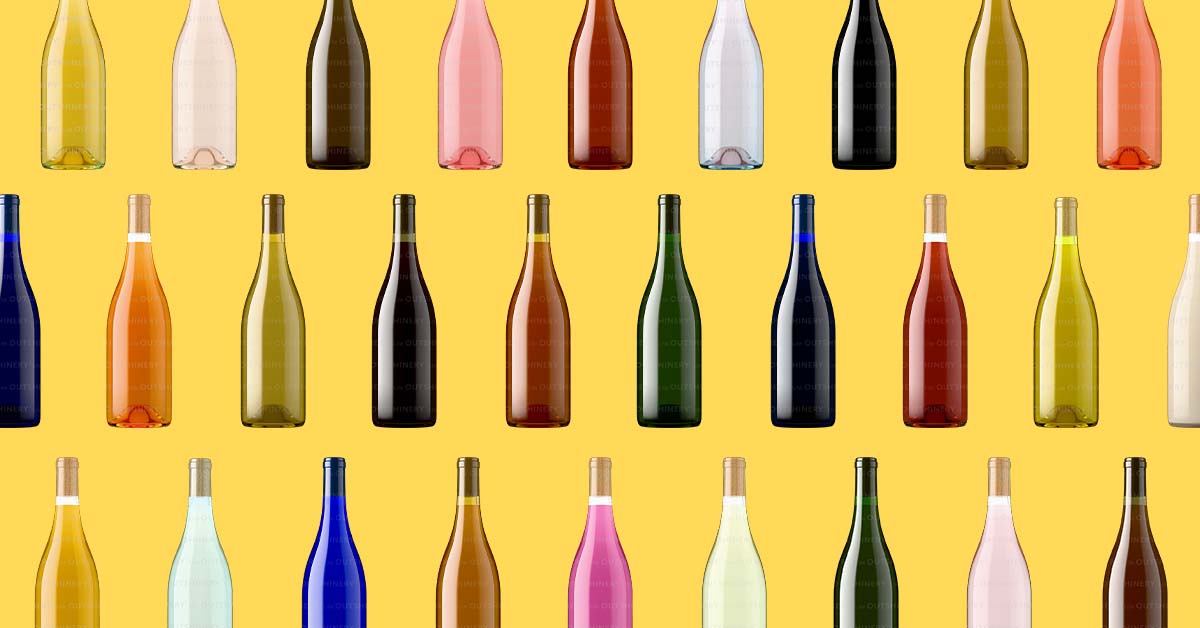The future of wine label design: predictions for 2025
Embrace today's packaging trends to boost next year's wine sales, marketing, and engagement

Wine label design is a crucial aspect of winery and wine brand marketing. By 2025, several trends and predictions are likely to shape the effectiveness of these designs in boosting sales.
In this article, we explore some of these trends and how wineries can embrace them to stay ahead in the competitive wine market. Also, get bonus printing tips that can help plan for label design success.
Short summary
The future of wine label design is evolving rapidly, and by 2025, several exciting trends will shape the industry.
Sustainable packaging with eco-friendly materials will appeal to environmentally conscious consumers, while advancements in digital printing will allow for personalized and interactive labels. Authentic storytelling through visual elements and sleek, minimalist designs will create strong connections with consumers. Integration of smart technology and augmented reality will offer immersive experiences, enhancing engagement and providing valuable insights.
Embracing these trends will not only boost wine sales but also elevate brand visibility and customer loyalty. Curious about how to stay ahead in the competitive wine market? Dive deeper into these innovative predictions and transform your wine labels today.
Sustainability and eco-friendliness
With increasing consumer awareness about environmental issues, sustainable packaging will be a significant factor. Labels made from recycled materials, biodegradable inks, and minimalist designs to reduce waste will resonate well with eco-conscious consumers. Clear messaging about a brand’s commitment to sustainability will be prominently displayed.
While not limited to the wine industry, some of the goals of the CPG industry might be shifting. Gartner predicts that by 2026, 20% of organizations with sustainable packaging goals will shift their focus from recycling and eliminating plastics to reducing the carbon footprint of their packaging.
Personalization and customization
Advancements in digital printing technology will allow wineries to offer personalized labels. Limited edition designs, customizable elements for special occasions, and interactive features like QR codes that lead to personalized content can create a more engaging and memorable experience for consumers.
This will also include shipment materials that accompany wine delivery. We've all seen how powerful this can be through the millions of unboxing videos on social media. According to data firm Smithers, he global market for e-commerce packaging is currently valued at $49.2 billion and is growing at a compound annual growth rate (CAGR) of 15%. It is projected to reach $98.2 billion by 2025.

Authenticity and storytelling
Consumers are increasingly interested in the story behind their wine. Labels that effectively communicate the history, heritage, and unique aspects of the vineyard and winemaking process will stand out. Visual elements like vintage photos, maps of the vineyard, and narratives about the winemakers can create a sense of connection and authenticity.
Beyond these elements that are traditionally associated with the wine industry, customers are looking for new ways to think about the wine brands they bring onto their tables. Procurement site Packaging Gateway highlights that innovative features such as hidden Easter eggs or puzzles can encourage consumers to engage more deeply with the product, fostering a stronger connection to the brand's narrative.

Sleek designs
While bold, eye-catching designs will continue to attract attention, a growing trend towards minimalism is emerging. Clean lines, simple color schemes, and uncluttered layouts can convey elegance and sophistication, balancing aesthetic appeal with clarity of information.
Modern label designs are favored for their elegance, simplicity, and contemporary appeal, attracting consumers who associate these traits with product quality and status. They enhance brand perception by conveying professionalism and attention to detail, helping products stand out in competitive retail settings. Additionally, these designs resonate with contemporary consumer preferences for minimalist and digital aesthetics.
We are also seeing a rising trend where wine bottles go "naked," featuring no capsules but only a cork, often branded with a logo. This more minimalistic and less wasteful approach to packaging aligns perfectly with the minimalist design trend, further appealing to environmentally conscious consumers.

Technology integration
Smart labels with embedded NFC (Near Field Communication) chips or QR codes are set to become increasingly common in the food and beverage industry. In Europe, QR codes have become de facto mandatory for displaying essential information such as nutritional tables, ingredient lists, and other required details.
These smart labels offer consumers a wealth of information accessible via their smartphones, including tasting notes, food pairing suggestions, and virtual tours of wineries or food production sites. This interactivity not only enhances the consumer experience but also provides valuable data to producers, allowing them to better understand and cater to their audience's preferences.
In addition to providing information and entertainment, technology-enhanced labels can also serve as a tool for tracing product authenticity and preventing counterfeiting. The importance of this security aspect will grow in the wine industry, where counterfeit products are proliferating. According to Sommelier Business, the global market for counterfeit wine is estimated to be a staggering 65 billion dollars.
Health and wellness information
With the growing trend towards health and wellness, labels that provide clear information about nutritional content, calorie count, and organic certifications will appeal to health-conscious consumers. Transparent labeling practices that highlight the purity and quality of the wine will build trust.
According to a Forbes article by Dr. Liz Thach, Christian Miller, research director for Wine Market Council, shared that 38% of U.S. consumers feel wine should include an ingredient list, compared to 42% for beer, 57% for hard seltzers, and 60% for RTD (ready to drink) cocktails. The study also revealed that consumers perceive wine as having the fewest ingredients among these beverages, with beer following, and RTD cocktails perceived to have the most ingredients.
Many countries such as Brazil, Lebanon, India, and the United States require health warnings on wine labels. If you sell or make wine in the European Union, there are new labeling rules as of the end of 2023. Fortunately, you’ve got a solution. E-labels by Bottlebooks are affordable and easy to use. If you don’t sell wine in the EU right now, this is still important to know, as some expect similar changes to arrive in North America in the future.

Local and regional identity
Labels that emphasize the local origin and regional characteristics of the wine will continue to be effective. This trend aligns with the broader consumer preference for local and artisanal products. Distinctive regional motifs, local language, and symbols can enhance the appeal.
Wine labels that emphasize local identity resonate deeply with consumers who appreciate authenticity and a sense of place. By incorporating elements such as local landmarks, traditional patterns, or references to regional folklore, wineries can evoke a strong connection to their origins. This not only instills a sense of pride and heritage in the product but also attracts consumers interested in supporting local businesses. Additionally, showcasing local identity helps to differentiate wines in a crowded market, fostering loyalty among consumers who value unique, region-specific characteristics.

Digital and augmented reality (AR) experiences
Augmented reality (AR) labels come to life through a smartphone app, offering an interactive and immersive experience. These labels dynamically convey the brand's story, provide virtual tasting sessions, and engage consumers with entertaining content.
With AR labels, wineries can transform the consumer experience by merging the physical and digital worlds. Scanning an AR-enabled label with a smartphone instantly immerses consumers in a captivating multimedia narrative. This technology can reveal the brand's history, showcase vineyard tours, and detail each bottle's production process through engaging visual and audio elements.
Beyond storytelling, AR labels can host virtual tasting sessions where expert sommeliers guide consumers through the wine's notes, aromas, and flavors, enhancing their tasting expertise and enjoyment. This deepens the consumer's understanding of the wine and creates a memorable, personalized connection to the brand.
Additionally, AR experiences can include interactive games or quizzes about the wine, adding fun and entertainment that keeps consumers returning for more. These immersive experiences break traditional barriers in wine marketing, offering a cutting-edge way to engage a tech-savvy audience and solidify brand loyalty in a competitive market.
Conclusion
By 2025, effective wine label designs will likely combine traditional elements with innovative technology to create a compelling, interactive, and sustainable consumer experience. Wineries that can effectively leverage these trends will be well-positioned to enhance their brand appeal and drive sales in an increasingly competitive market.
Top takeaways
- Commit to eco-friendly practices to appeal to environmentally-conscious consumers and position your brand as a responsible industry leader.
- Use digital printing advancements for customizable and interactive labels, enhancing consumer engagement and creating memorable experiences.
- Create labels that convey the authentic history and heritage of your winery, resonating with consumers' desire for connection and authenticity.
- Balance bold visuals with sleek, minimalist aesthetics to convey elegance and clarity, capturing consumer attention while providing essential information.
- Use smart labels with NFC chips or QR codes to offer interactive content, delivering a comprehensive consumer experience.
- Transparently display nutritional content and certifications on labels to attract health-conscious consumers and build trust in your brand.
- Celebrate your wine’s local origin with labels that emphasize regional characteristics, tapping into the growing consumer preference for artisanal products.
- Incorporate AR experiences to create dynamic and entertaining label interactions, further engaging consumers and distinguishing your brand.










































